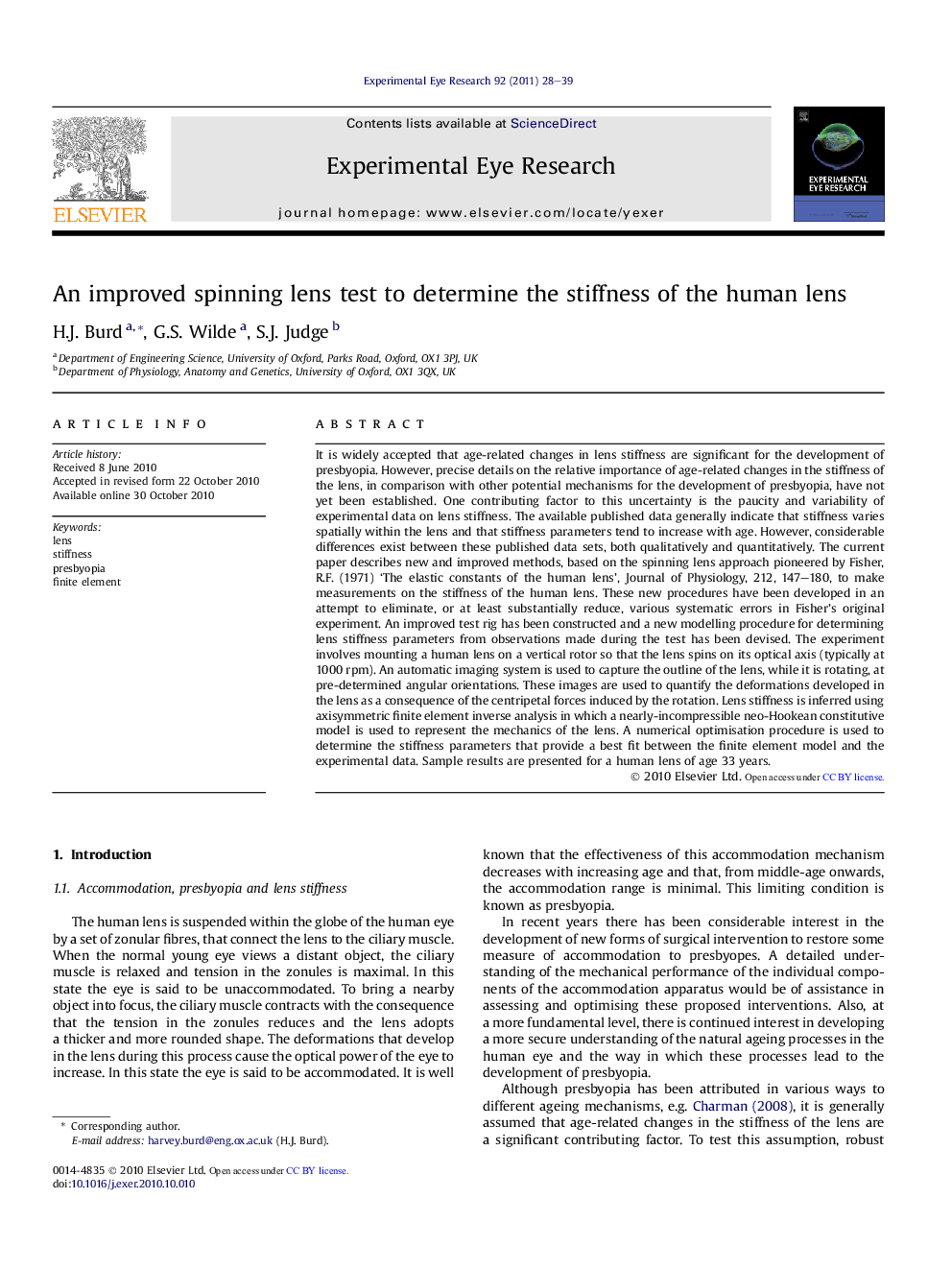| کد مقاله | کد نشریه | سال انتشار | مقاله انگلیسی | نسخه تمام متن |
|---|---|---|---|---|
| 6197483 | 1261164 | 2011 | 12 صفحه PDF | دانلود رایگان |

It is widely accepted that age-related changes in lens stiffness are significant for the development of presbyopia. However, precise details on the relative importance of age-related changes in the stiffness of the lens, in comparison with other potential mechanisms for the development of presbyopia, have not yet been established. One contributing factor to this uncertainty is the paucity and variability of experimental data on lens stiffness. The available published data generally indicate that stiffness varies spatially within the lens and that stiffness parameters tend to increase with age. However, considerable differences exist between these published data sets, both qualitatively and quantitatively. The current paper describes new and improved methods, based on the spinning lens approach pioneered by Fisher, R.F. (1971) 'The elastic constants of the human lens', Journal of Physiology, 212, 147-180, to make measurements on the stiffness of the human lens. These new procedures have been developed in an attempt to eliminate, or at least substantially reduce, various systematic errors in Fisher's original experiment. An improved test rig has been constructed and a new modelling procedure for determining lens stiffness parameters from observations made during the test has been devised. The experiment involves mounting a human lens on a vertical rotor so that the lens spins on its optical axis (typically at 1000Â rpm). An automatic imaging system is used to capture the outline of the lens, while it is rotating, at pre-determined angular orientations. These images are used to quantify the deformations developed in the lens as a consequence of the centripetal forces induced by the rotation. Lens stiffness is inferred using axisymmetric finite element inverse analysis in which a nearly-incompressible neo-Hookean constitutive model is used to represent the mechanics of the lens. A numerical optimisation procedure is used to determine the stiffness parameters that provide a best fit between the finite element model and the experimental data. Sample results are presented for a human lens of age 33 years.
Research highlights⺠A new spinning lens rig has been devised to measure the stiffness of the human lens. ⺠Finite element analysis procedures are developed to determine lens stiffness data from the test results. ⺠The experiment is capable of investigating spatial stiffness variations in the lens.
Journal: Experimental Eye Research - Volume 92, Issue 1, January 2011, Pages 28-39